66 F. high in the Twin Cities Saturday.
79 F. average high on June 14.
79 F. high on June 14, 2013.
.41" rain fell at MSP International Airport as of 7 PM yesterday.
18.37" precipitation in 2014, to date.
11.47" normal precipitation as of June 14.
How
long can Dad hold his breath? Just going out to fetch the paper may
require the backstroke this morning. Be careful out there. A Flash Flood
Watch is posted, and I expect very heavy rains during the morning
hours, capable of sparking flash flooding of streets, streams and poor
drainage areas. Skies dry out later today but a nagging warm frontal
boundary keeps us thundery into Friday. At least it'll heat up; the
first 90 degree high of 2014 possible by Tuesday.
Waterlogged Dads
"A
father has pictures where his money used to be." Yep, that sounds about
right. You may see more of dear old dad today. No need to water the
yard, and debilitating sunburn will not be a problem. Then again, if you
have your health and your kids are doing OK, how bad can it be?
Peering
out my rain-splattered window it's not hard to believe that June is
Minnesota's wettest month of the year. Pond-size puddles and leftover
storms give way to brightening skies later today. You may even salvage a
little lukewarm sun by late afternoon and evening.
A sluggish
warm front will torment us much of this week as patterns stall;
Minnesota on the northern edge of a huge heat bubble with 90s and
sauna-worthy dew points just to our south. This set-up will create a
ROF, or "ring of fire": an arc of thunderstorms bubbling up, especially
at night. An additional 1-3 inches of rain may fall. With saturated soil
it won't take much additional moisture for flash flooding.
Temperatures surge into the 80s to near 90F by midweek with T-storms sprouting every day into Friday.
Next
week looks hotter and drier as we finally limp into a real summer
pattern as the core of the jet stream (finally) lifts into southern
Canada. Coming after one of the wettest springs on record.
Another Saturday Soaking.
Rainfall amounts (NWS Doppler estimated) as of midnight show some 1-2"
amounts common across the Twin Cities metro yesterday, as much as 4-5"+
near Marshall and Pipestone. More heavy rain is likely this morning.
Peak Wind Gusts Saturday:
Wind-Related Damage. NOAA has a
complete list
of wind and hail damage from Saturday's severe T-storms and
gravity-wave-induced high winds in and around the Twin Cities metro. See
below.
Damaging Winds Saturday Induced by Gravity Waves?
MSP International experienced a wind gust to 68 mph shortly before 1 PM
Saturday, with only light rain in the area - no severe thunderstorms
nearby. The probably culprit: gravity waves, which are virtually
impossible to predict in advance. Here's a good explanation of how
gravity waves can spark strong winds on the surface, courtesy of
NOAA: "
A
gravity wave is a meteorological phenomenon where strong winds of one
to two hours's duration occur along with a rapid fall and rise in
surface pressure. graveity waves usually form along the back edge of a
large area of precipitation followed by rapid drying in the middle
layers of the atmosphere. There is a net upward motion in the area of
rainfall followed by a net downward motion in the dry air behind. This
produces a small pressure disturbance at the surface. The pressure
disturbance is allowed to grow due to the presence of a layer of stable
are anywhere from 5,000 to 12,000 feet above the ground. This stable
layer maints and "ducts" the now-growing pressure wave horizontally
along the earth's surface instead of allowing it to disperse up and
outward through the depth of the atmosphere...."
Yet Another Soggy Holding Pattern.
No, lake and river levels won't be going down anytime soon. Once again
the weather is getting stuck, a warm frontal boundary lurking just south
of Minnesota will spark the development of multiple waves of showers
and T-storms into Friday of this week. NOAA models suggest some 5-7"
rains over the next 7 days - much of Minnesota is on track for the
wettest spring on record.
84-Hour Future Radar.
NOAA's 12km NAM shows the heaviest rain and embedded T-storms coming
this morning and midday, with drying during the afternoon hours. We may
salvage a few peeks of sun by the dinner hour, especially over southern
and southwestern Minnesota. We dry out briefly on Monday before more
storms flare up along the northern boundary of inflamed, 90-degree air
Monday night. Storms may become more numerous by Wednesday night and
Thursday. Loop: NOAA and HAMweather.
Tornado Carries Home 100 Yards With Family Inside.
KVUE-TV has the harrowing details and a video update; here's an excerpt: "
A
tornado touched down in Burnet County, just outside Bertram. It even
carried a home about a football field distance away. The home is still
standing, the family of four inside was not hurt. Surveyors with the
National Weather Service said they haven't seen anything like this. They
spent the day there following the path of the tornado..."
Real Tornado Alley Much Farther South.
Are we seeing an eastward shift in Tornado Alley over time, or is this
just a function of tornadoes impacting more populated regions of the
USA? Here's an excerpt of an AP story at
timesdaily.com: "...
Oklahoma
and Kansas may have the reputation as tornado hot spots, but Florida
and the rest of the Southeast are far more vulnerable to killer
twisters, a new analysis shows. Florida
leads the country in deaths calculated per mile a tornado races along
the ground, followed by Tennessee, North Carolina, Ohio and Alabama,
according to an analysis of the past three decades by the federal
Southeast Regional Climate Center at the University of North Carolina.
That's because Florida is No. 1 in so many factors that make tornadoes
more risky: mobile homes, the elderly and the poor, said center director
Charles Konrad II, who headed the new work..."
Map Shows Energy Installations In Extreme Weather's Path.
Climate Central just ran a story that caught my eye - here's a clip: "...
Are
there natural gas, oil pipelines or electricity transmission lines that
could break and leak in the flood or storm surge? Are oil and gas wells
nearby that could flood and leach hydrocarbons into the river? Those
answers can be found online using the U.S. Energy Information
Administration's interactive U.S. Energy Mapping System,
which shows all the major energy infrastructure for any given address
in the U.S. It allows anyone to look closely at what power plants,
refineries, oil wells, power lines and other installations might exist
in a place that is vulnerable to extreme weather..."
Interpreting How Climate Change Affects Extreme Events. Here's a good 2 page overview (PDF) from
NOAA. An excerpt: "
The
vulnerability of coastal regions to storm surge flooding is expected to
increase with future sea level rise and coastal development, although
this vulnerability will also depend on future storm characteristics. It
is virtually certain (99-100% chance) that the frequency and intensity
of daily heat extremes will increase, and there will be fewer cold
extremes. It is very likely the frequency of heavy precipitation events
will increase over many regions, but there is uncertainty around effects
on flooding in specific areas..."
Brown Is The New Green at U.S. Open: Water is "Biggest Obstacle" Facing Golf, Says USGA. Joe Romm has an interesting angle for anyone who likes golf (or water!) at
ThinkProgress; here's a clip: "
If you tune into the U.S. Open golf championship this Father’s Day weekend, you may think you’re watching the Dubai Desert Classic or the infamous “Brown British Open.”
But the U.S. Golf Association wants you to know that what you’re really
seeing at Pinehurst #2 in North Carolina is the future of golf. The
Washington Post reports that USGA executive director Mike Davis said this week:
“We happen to think that, long term, water is going to be the biggest obstacle in the game of golf…. It’s not going to be a question of cost. It’s a question of: Will you be able to get it?”
Brown is the new green. Or, rather, browns are the new greens..."
Photo credit above: "
Ian
Poulter practices on fifth hole of U.S. Open in Pinehurst, NC. The
course has slashed water use, a future in store for many courses, thanks
to man-made climate change." (Photo: AP)
11 Maps That Explain The U.S. Energy System.
Vox has a fascinating article that helps to put things into perspective; here's an excerpt: "...
Wind
has been rising fast, albeit from a low base. In 2008, wind provided
about 1 percent of the nation's electricity. That rose to 3.6 percent in
2012 and 4.1 percent in 2013.
There are two big reasons for that rapid growth: The federal government
has provided both tax credits and subsidies (with a big boost in the
2009 stimulus bill). What's more, many states now have laws requiring
utilities to get a certain portion of their electricity from renewables.
(One notable exception here is the Southeast.)..."
Are You Smarter Than a 6th Grader?
Our kids and grandkids will be cleaning up many of our messages, and
you can't help but be impressed with a group of 6th graders in
Charlotte, North Carolina, building apps (!) to lower the risk of flood
disasters. Here's a video and excerpt from
WSOC-TV: "
A
group of 6th graders in Charlotte created a flood level detection
device and smartphone app to alert people when there is flooding in
their neighborhood. The device is such a success the team won a regional
science completion and is headed to Washington D.C. on Monday. A state
of emergency was declared in North Carolina last summer due to summer
floods that left the western part of the state under water. It was the
worst flash flooding the area has seen in decades. This device was made
to help better prepare people for situations like this..."
Have You Hugged A Concrete Pillar Today?
I tend to take so much for granted, including the materials that power
modern life. Bill Gates has an interesting review - and how we need to
find new energy-efficient ways of powering our economies, at
Quartz; here's an excerpt: "...
This
isn’t just idle curiosity. It might seem mundane, but the issue of
materials—how much we use and how much we need—is key to helping the
world’s poorest people improve their lives. Think of the amazing
increase in quality of life that we saw in the United States and other
rich countries in the past 100 years. We want most of that miracle to
take place for all of humanity over the next 50 years. As more people
join the global middle class, they will need affordable clean energy.
They will want to eat more meat. And they will need more materials:
steel to make cars and refrigerators; concrete for roads and runways;
copper wiring for telecommunications..."
10 Favorite Quotes About Fathers. There are a few great ones in here - thanks to
PBS Next Avenue for sharing these: "
There's
no denying that fathers play a special role in their children's lives.
Whether it's patiently teaching us how to cast a fishing line,
encouraging us to follow our dreams, or simply working hard to provide opportunities, dads remind us over and over again that love can be expressed in many different ways. In honor of Father's Day, here is a selection of quotes that capture the trials and triumphs of fatherhood..."
How To Watch The World Cup in the U.S. Without Paying for TV. No cable or satellite? No problem.
Quartz has a few suggestions on how to watch The Big Game for free, online. Here's a clip: "
Most of the world can watch the World Cup for free. Not so much in the US. The
tournament, which begins today, will largely air on cable; streaming
matches online also requires a television subscription. But there are a
few options for so-called cord cutters who don’t pay for TV but still
want to watch the World Cup..."
FATHER'S DAY: Flash Flood Watch. Heavy rain early, drying out late. Flash Flooding risk into early afternoon. Winds: S/SW 15-25. High: 76
SUNDAY NIGHT: Partial clearing. Low: 62
MONDAY: Sticky sun, more T-storms late. High: 86
TUESDAY: Hot sun, steamy. Dew point: 67 Wake-up: 70. High: near 90
WEDNESDAY: Free sauna. Few pop-up T-storms. Wake-up: 71. High: 88
THURSDAY: More numerous T-storms. Dew point: 68. Wake-up: 71. High: 83
FRIDAY: Unsettled, lingering showers. Wake-up: 63. High: 77
SATURDAY: Partly sunny, find the sunscreen. Wake-up: 62. High: 84
Climate Stories.
NASA To Launch First Satellite To Chart Levels of Carbon Dioxide in Atmosphere. Bloomberg has the details; here's the introduction: "
The
National Aeronautics and Space Administration plans to launch July 1
its first satellite dedicated to measuring carbon dioxide levels in
Earth's atmosphere. The $465 million Orbiting Carbon Observatory-2
(OCO-2) mission seeks to provide a more complete picture of human and
natural sources of carbon dioxide globally, as well as sinks where
carbon dioxide is absorbed. On average, the Earth's plants and oceans
absorb about half of the nearly 40 billion tons of carbon dioxide added
to the atmosphere each year from the burning of fossil fuels and other
human activities..."
Photo credit above: JPL/NASA "
NASA's Orbiting Carbon Observatory-2 (OCO-2) satellite, dedicated to measuring carbon dioxide levels in Earth's atmosphere."
Global Climate Change Is Worsening Instability And Making It Harder To Keep The Peace. Just another rant from a flaming liberal with an ax to grind? Not quite. Here's an excerpt from
a
Veteran Army Officer, Former Obama Admin Official at DOD, Truman
National Security Project Fellow and MBA Candidate at UC Berkeley Haas
School at
Huffington Post: "...
From
rising sea levels to increased frequency and intensity of extreme
weather events such as droughts, floods, and storms, to resource
scarcity, the effects of climate change are already exacerbating
security risks abroad and threatening our military installations here at
home, putting critical infrastructure at risk. In Pakistan,
record-breaking floods in 2010 inundated more than one-sixth of the
country, rendering large swaths of ungovernable territory vulnerable to
recruitment efforts from extremist groups. In Syria, the historic
five-year drought from 2006 to 2011 destroyed livelihoods for millions
of rural farmers and herders, who then sought relief in urban centers
that were not prepared to accommodate the overwhelming influx of people..."
Melting Glaciers a "Climate Tipping Point", Bonn Meeting Told. Here's an excerpt from
Irish Times: "
World
leaders need to ensure that global warming is kept low enough to avoid
“pulling the plug” on vast ice shelves in Antarctica, thereby causing a
catastrophic sea level rise across the globe, a leading scientist warned
yesterday. Dr Anders Levermann,
of the Potsdam Institute for Climate Impact Research, noted last
month’s major scientific report warning that a collapse of large
sections of the west Antarctica ice shelf had already begun and was now
“unstoppable”..."
Photo credit above: "Dr
Anders Levermann told a side event at the UN climate talks in Bonn that
the Earth has entered a new era of irreversible climate change: “West
Antarctica has tipped and there isn’t anything we can do about it.” Photograph: Reuters/Australian Antarctic Division.
Climate Change Historians Will Look Back And Ask "Why Didn't They Act?" Because of greed, special interests, ignorance, inconvenience and inertia. Here's an excerpt from
The Guardian: "
Most
historians think about the past. Some study the present. Very few, it
has to be said, write about the future. But Naomi Oreskes, a Harvard
professor in the history of science, believes that our inertia in the
face of climate change will puzzle academics for centuries to come. “The
historian of the future will look back on today and ask, what happened?
Why didn’t they act on what they knew?” she says in her sunny office in
Cambridge, Massachusetts, surrounded by rocks that speak of her own
past as a geologist. Oreskes’ latest book, The Collapse of Western Civilization: A View from the Future, imagines a Chinese scholar in 2393 analysing the slow-motion disintegration of 21st-century democracies as they fail to tackle a growing environmental catastrophe..."
Apparent Pause In Global Warming Blamed on "Lousy" Data. Sea levels continue to rise, a byproduct of steady warming of the world's oceans. Here's an excerpt from a story at
The Guardian: "
A
widely reported "pause" in global warming may be an artefact of
scientists looking at the wrong data, says a climate scientist at the European Space Agency.
Global average sea surface temperatures rose rapidly from the 1970s but
have been relatively flat for the past 15 years. This has prompted
speculation from some quarters that global warming has stalled. Now,
Stephen Briggs from the European Space Agency's Directorate of Earth
Observation says that sea surface temperature data is the worst
indicator of global climate that can be used, describing it as "lousy".
"It is like looking at the last hair on the tail of a dog and trying to
decide what breed it is," he said on Friday at the Royal Society in
London..."
Photo credit above: "
The belief that global warming has paused is based on the stability of sea surface temperatures over the past 15 years." Photograph: Image Source/REX.
Don't Give Climate Deniers Equal Time.
I'll be happy to debate climate science, right after the debate on
gravity and the the (alleged) curvature of the Earth. I think NASA is
touching up those photos from space (did we even go into space?) Because
the Earth sure looks flat outside my window. Here's an Op-Ed at
philly.com: "...
One
of the most important strategies we could employ to stop climate change
is for the media to stop giving time and space to climate-change
deniers. There is only one side of this story: Climate change is real,
it is happening now, we are the cause, and it will be worse than we
predicted. The real story that should be covered is why, in the face of
overwhelming, unequivocal evidence, do people still deny climate change?
Is it lack of environmental literacy? Is it due to either political or
financial self-interest? Why?..." (Photo credit: Shutterstock).
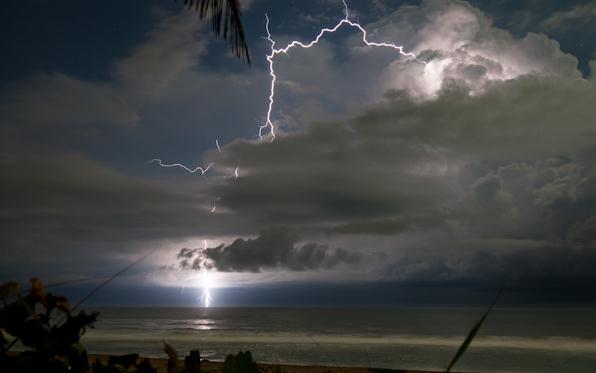



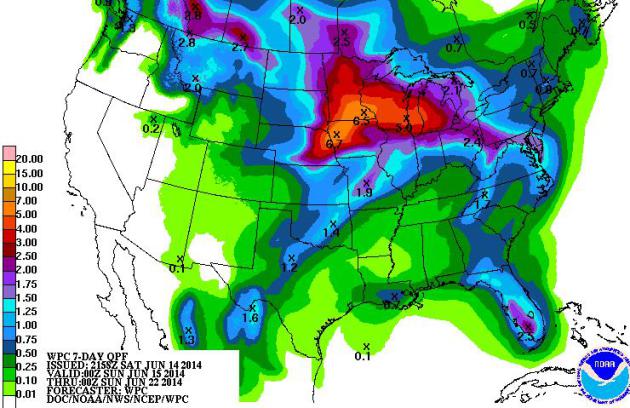
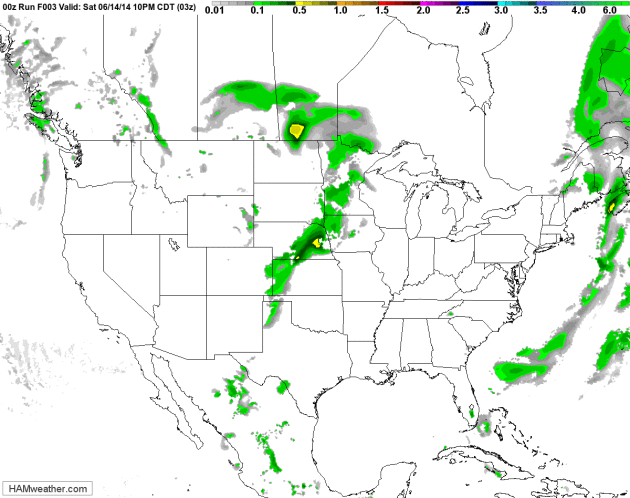


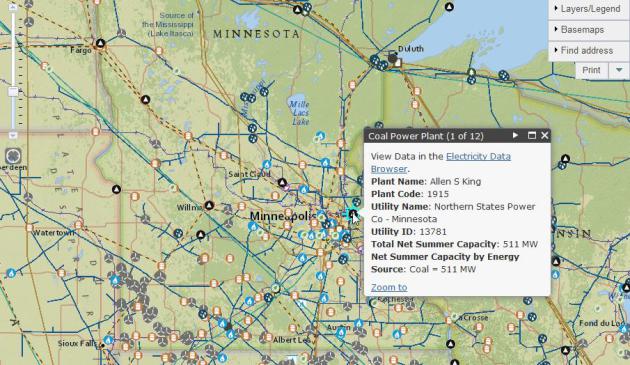


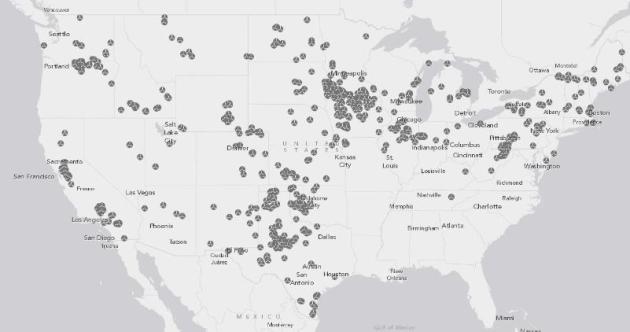
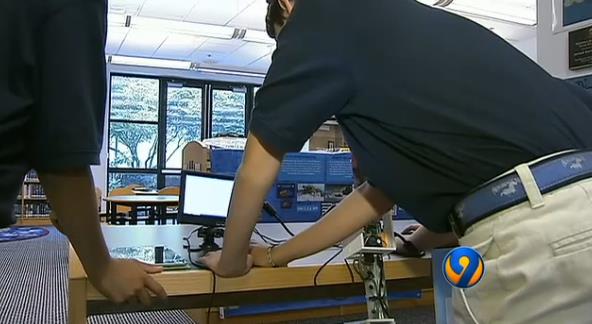





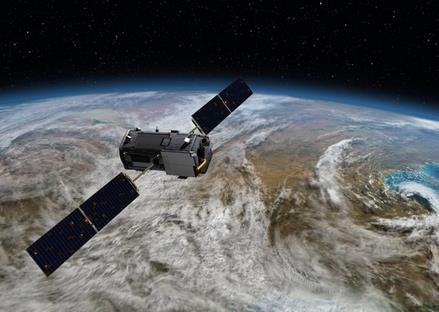

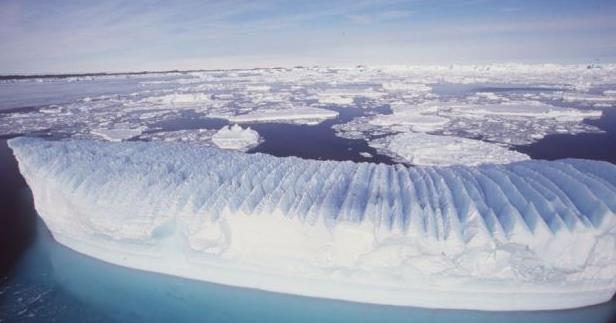



No comments:
Post a Comment